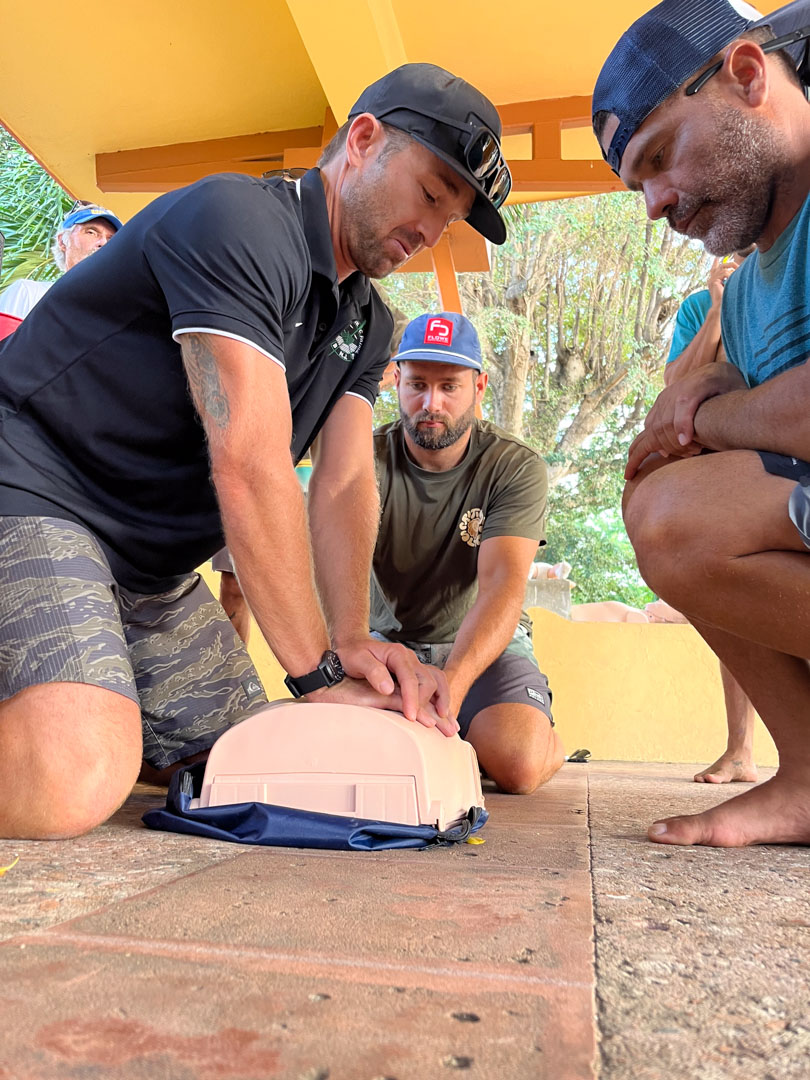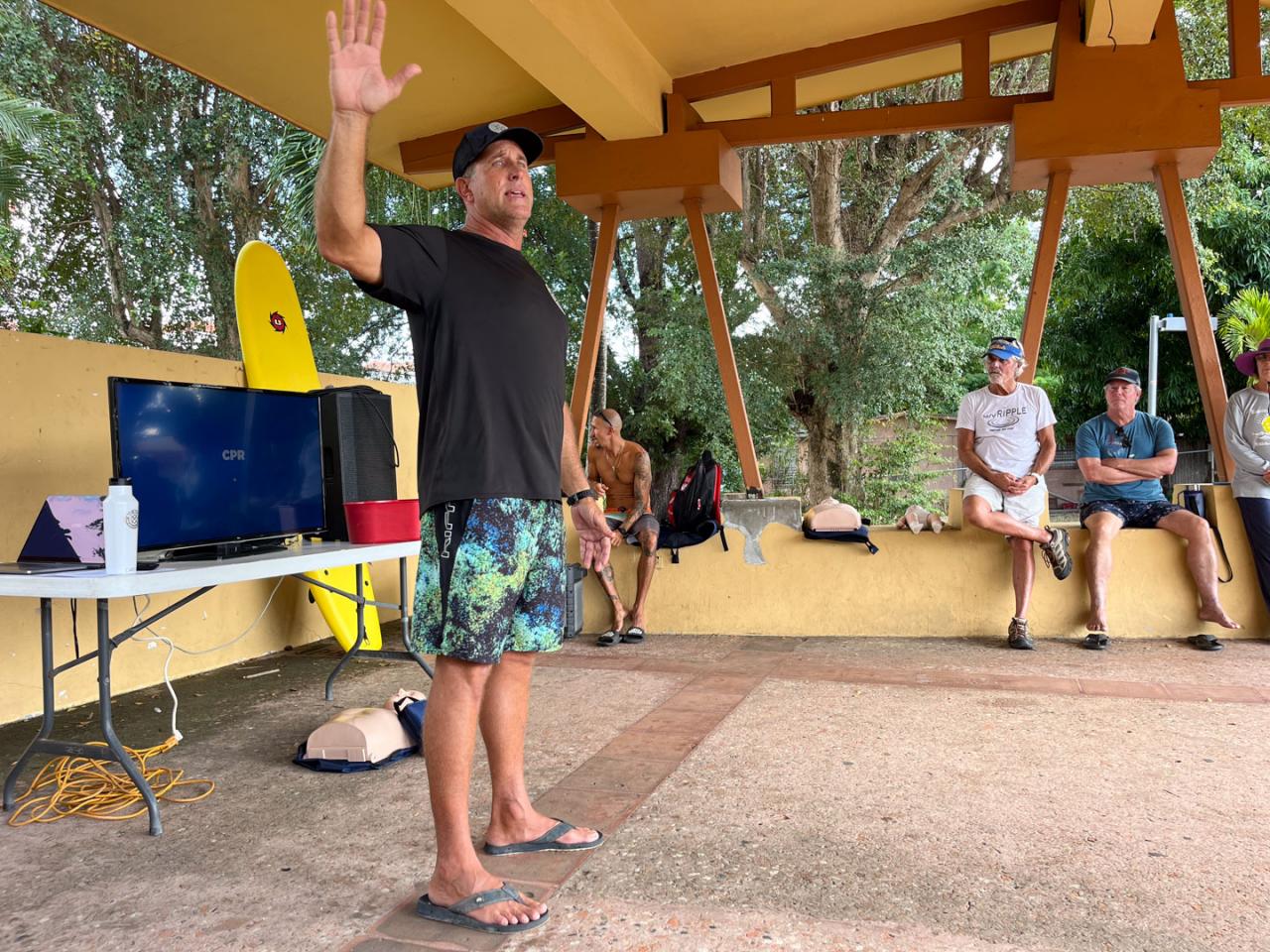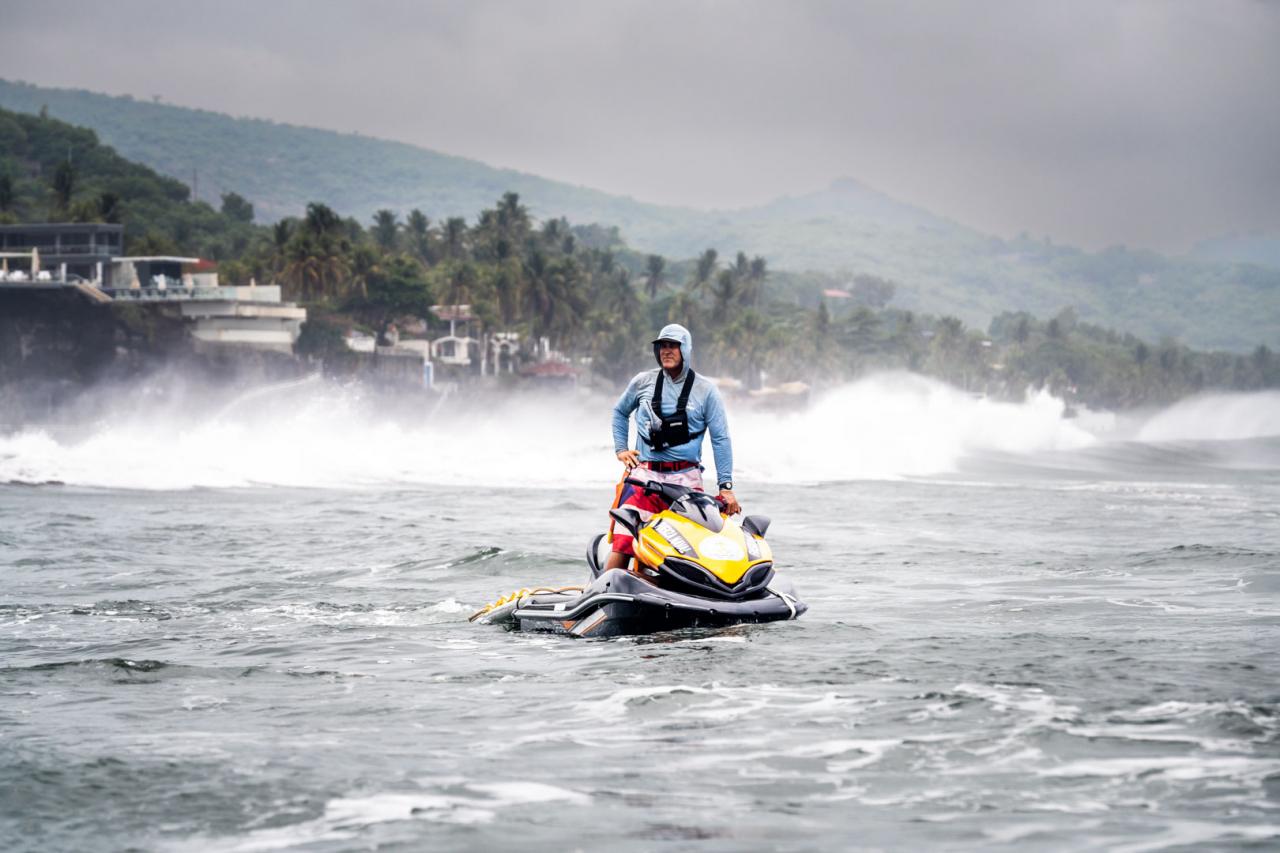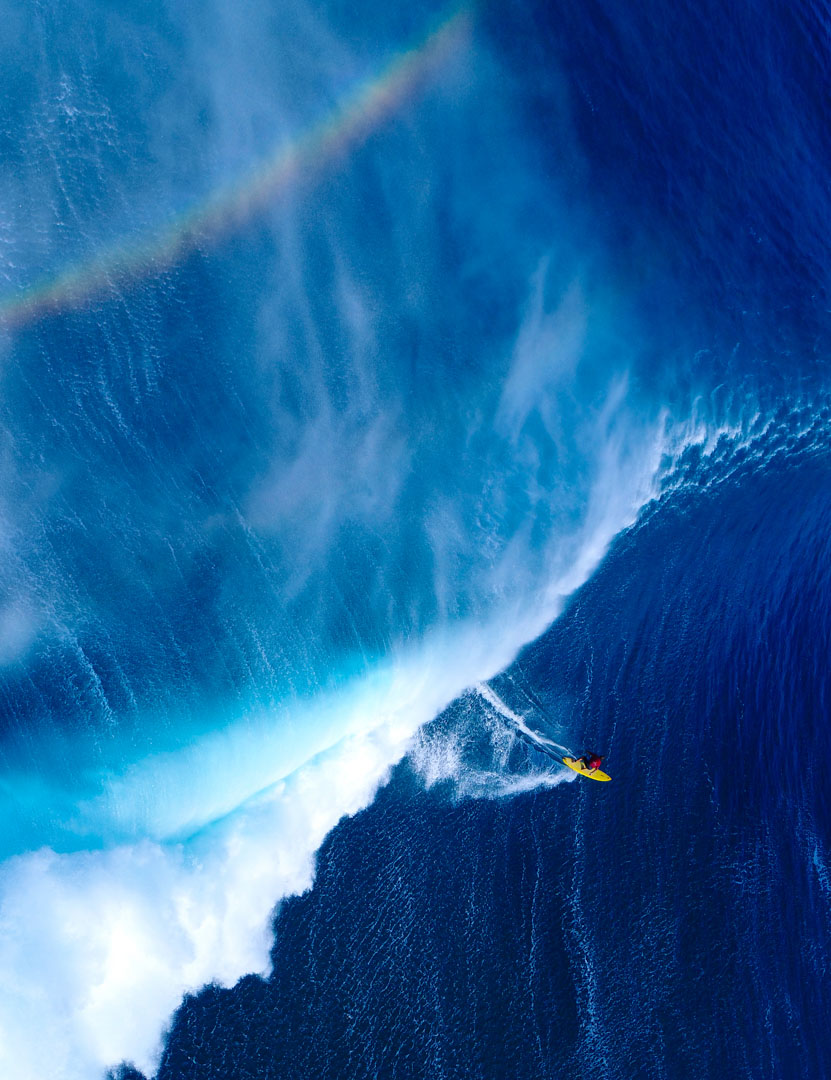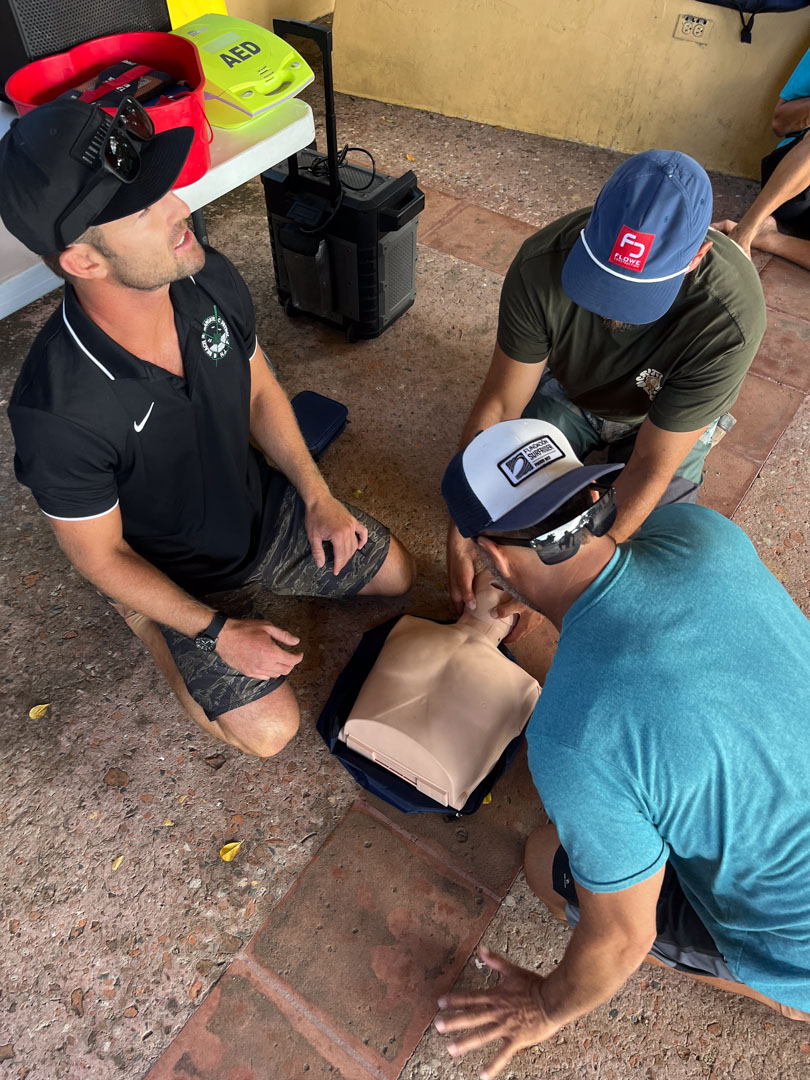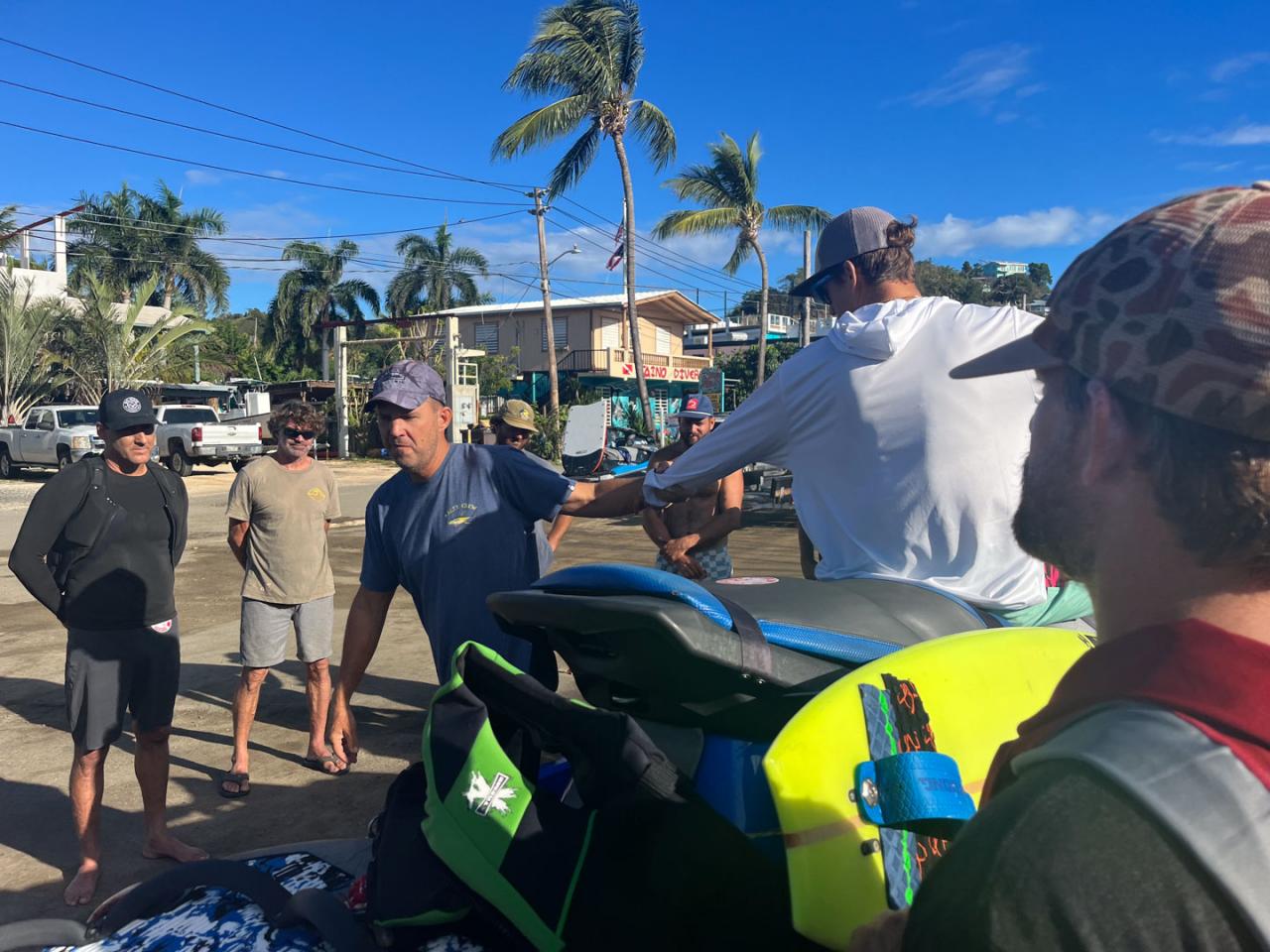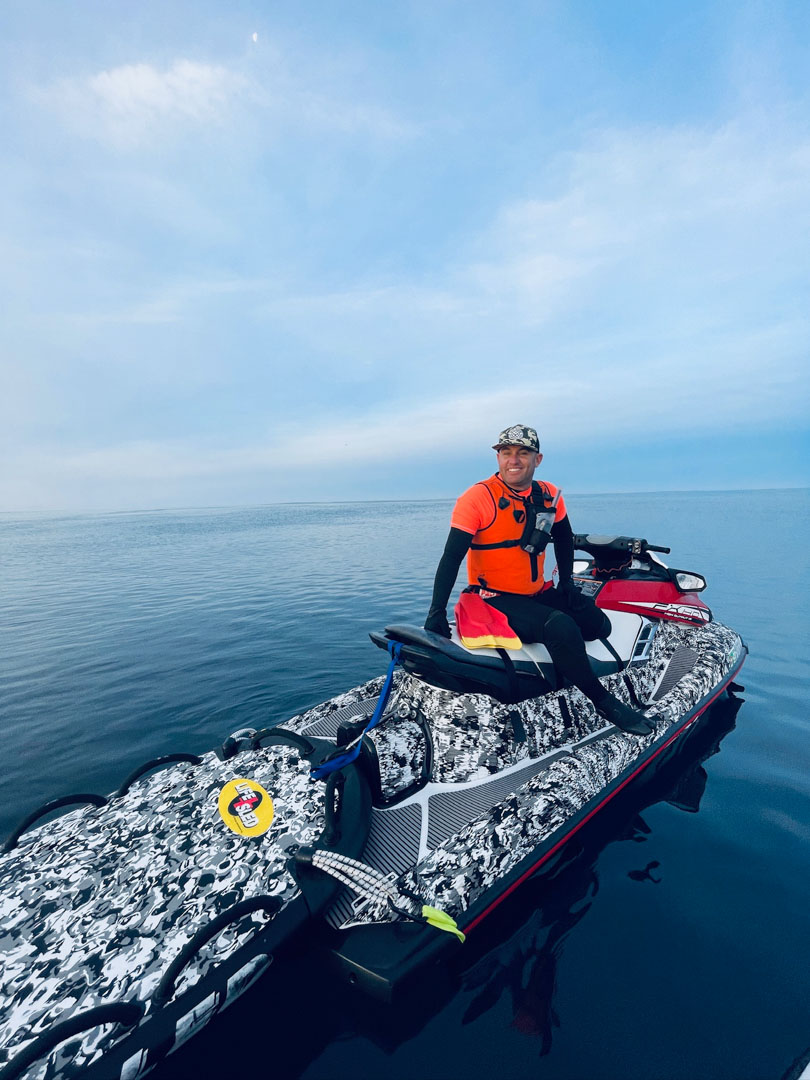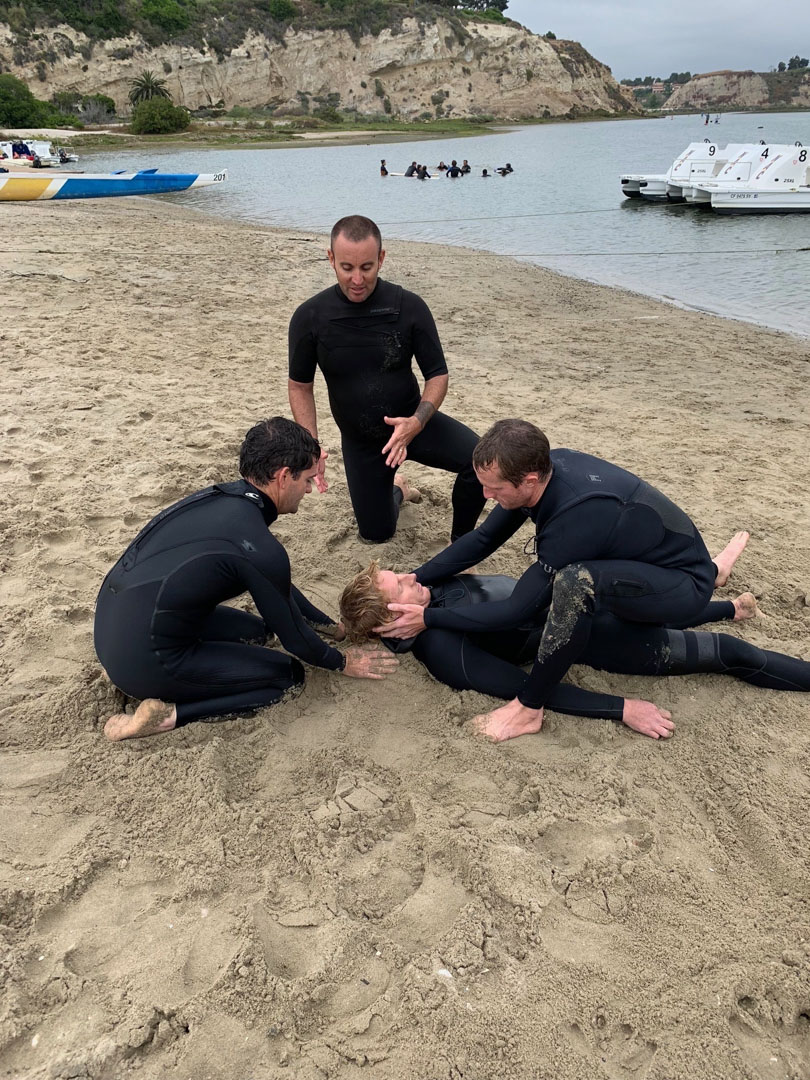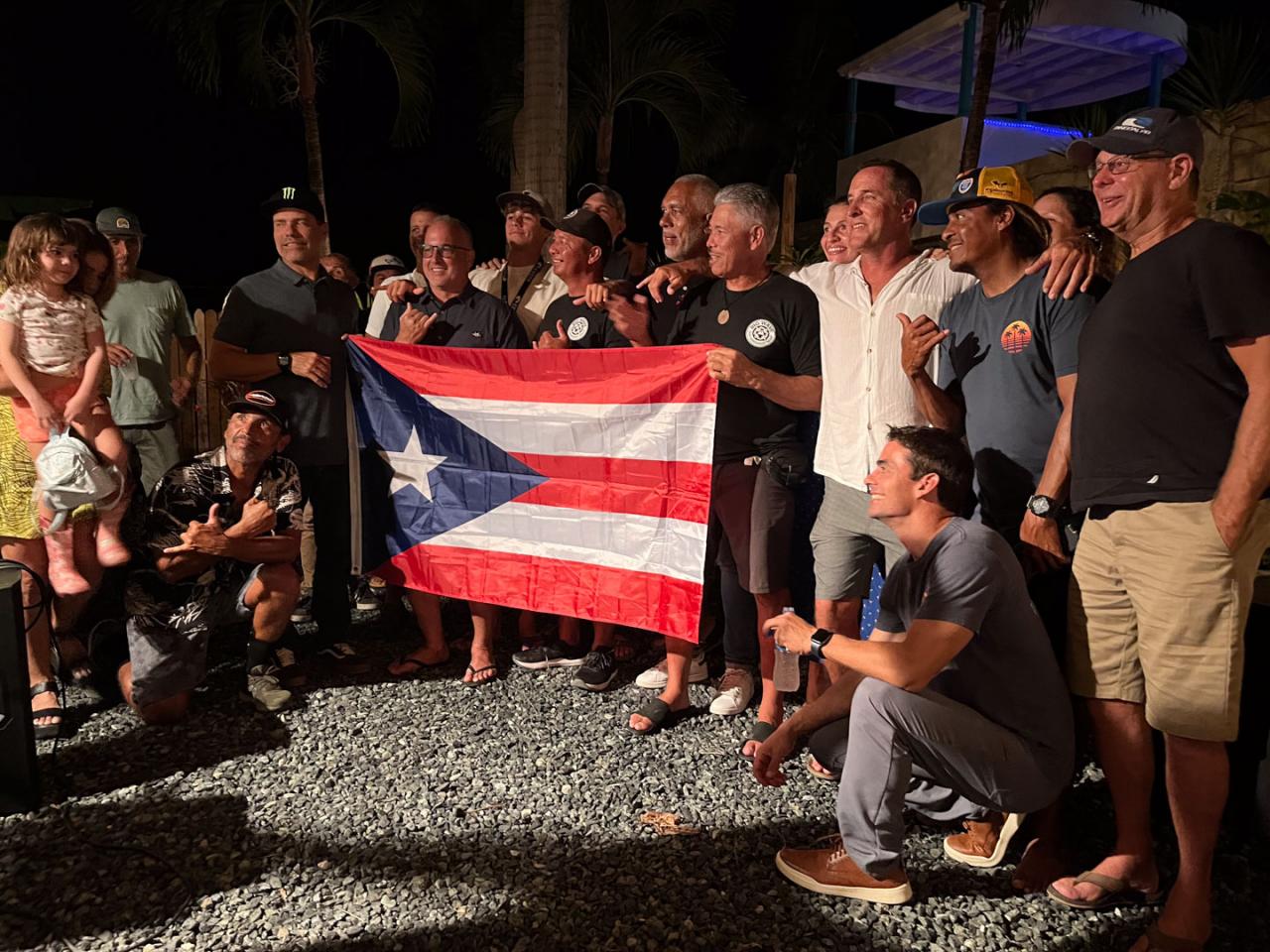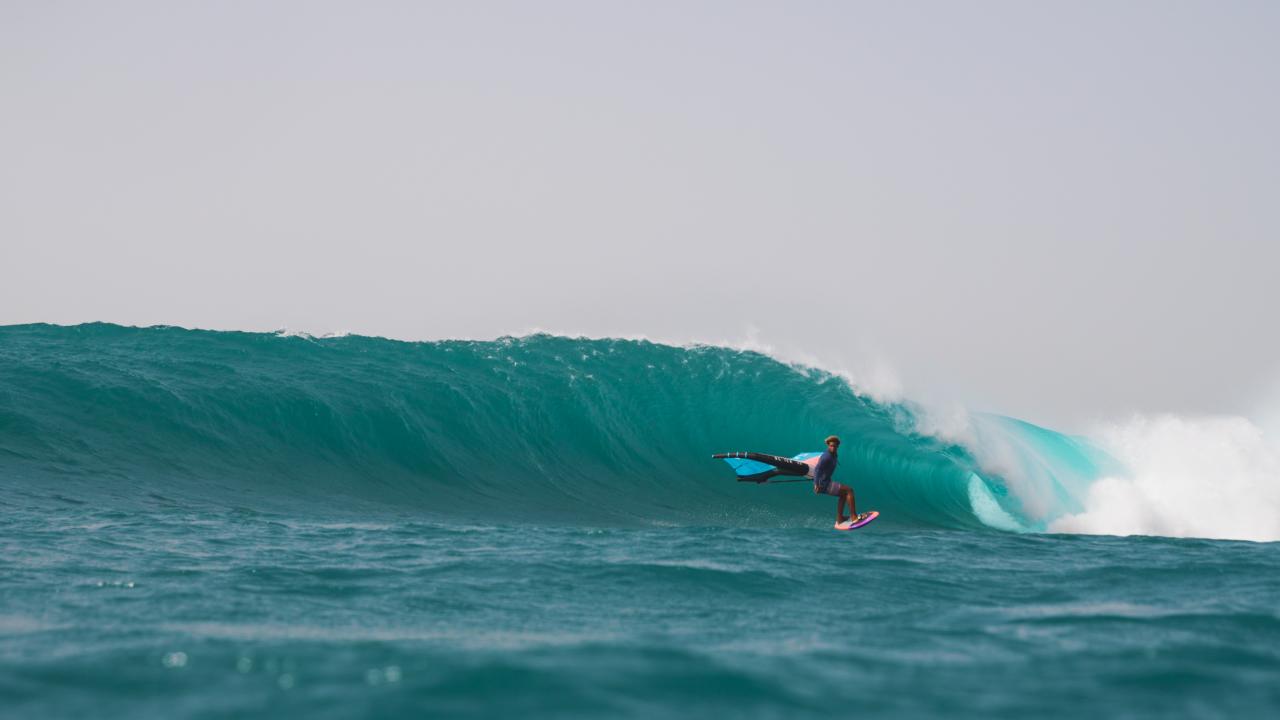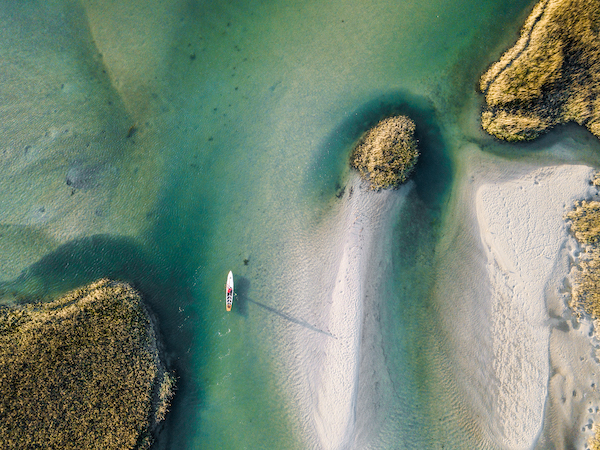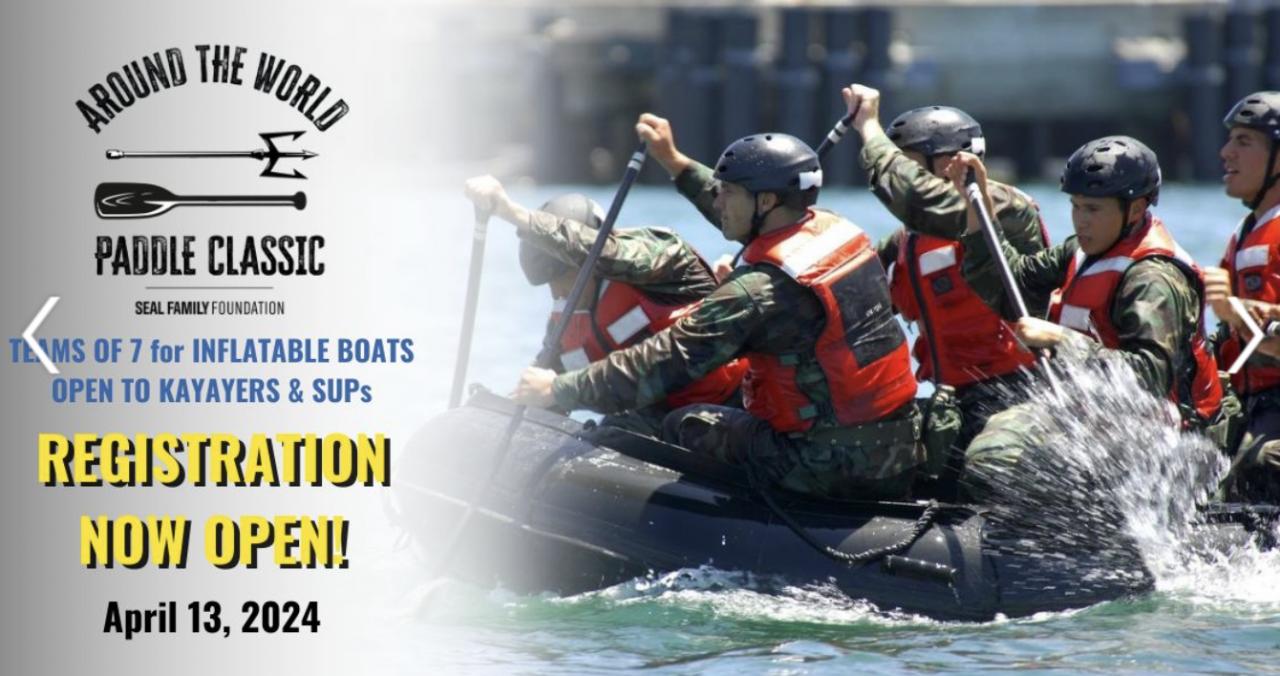"As soon as I heard the screams, I knew what it was." These were the words shared by my friend Greg Carson (aka "Carson") as he recounted the events that transpired over the last few hours.
Carson is a living legend in Rincón, Puerto Rico. He came to the west side of the island in 1991 after graduating from the University of Florida and has stayed ever since. The waterman lifestyle and super chill vibe of this surf-rich community spoke to the barrel-chested Texan-born gunslinger in a way that felt more like home than any other place he'd seen. At 6'4 with a permanent cheshire grin and a Matthew McConaughey Texan drawl, Carson holds a calm steady presence in any surrounding. Whether he's organizing a safety meeting among the big wave crew the day before a swell or heel-stomping to a Johnny Cash cover as the lead guitarist and vocalist for "The Rubber Neckers", Carson is the kind of guy people in the community look to for guidance, direction and safety when it's needed most.
I've had the pleasure of getting to know Carson over the years during my time in Rincón. He has the build and the swagger of a superhero out of costume. A little bit of Buzz Lightyear meets Laird Hamilton. Carson is incredibly humble in his talents and generous with his time. He's even known to serve as officiant over a few local weddings provided the ceremony happens on a day without wind or waves. "If you're ready to get hitched tomorrow, or the minister bails out at the last minute, I'm your guy." Carson is always paddling out on the biggest of days at Tres Palmas or tow foiling with his band of brothers Bobby, Adrien, Craig and Thomas when the conditions line up just right. He is a waterman through and through riding anything and everything on a pursuit to have as much fun as possible no matter what conditions are thrown his way. At the time of this writing, I'm having to regretfully decline an invitation to go winging with my subject in order to meet my deadline. Sorry partner.
Last year was a good year for swell in Puerto Rico. The west side of the island in particular catches its fair share of energy due to the deep water canyon that sits off the northwest corner. The Puerto Rican trench amplifies the incoming swell energy when long ground swells drag across its bottom before rocketing up the incline at the far end. Anything with a little north in it will wrap around the westerly point of the island like a bull whip creating long clean powerful lines that march toward the reef breaks of Maria's, Dogman's and Tres Palmas. The easterly trade winds provide consistent offshore wind conditions that clean up the faces of these deep blue giants as they boldly present themselves in all their glory before engaging with the anxiously awaiting line ups.
We had plenty of waves late in the season last year. There was one swell in particular that carried a long stretch of days reserved only for the bravest and most skillful riders while the rest watched and waited patiently from shore. It's these big days that make most of us stop to ponder whether it's too big to go out.
I waited for the swell to drop then paddled out at a spot down current from Maria's to avoid the crowd. I was in the water for about an hour when I spotted the striking silhouette of the man himself paddling toward me on a standup paddle board. "Look at you on a SUP!" I exclaimed. Carson sat down next to me eyes wide with a big grin on his face. He had just finished up a long day at the dive shop and was driving home by way of the Levy cow pasture. That's when he caught a glimpse of Baby Tres and made the decision to turn around. "I don't know what it was, but something spoke to me at that moment and told me that I should be out there."
That's when he turned his truck around, went back to the shop, grabbed his paddle board and made the long paddle from the marina to where I was sitting. We traded waves for another hour before heading back home in our separate directions. Soon after we parted ways, Carson heard a scream from the foot path that goes along the shoreline of the cow pasture. He immediately dropped to his belly and paddled feverishly toward the sound. As he approached the shore he saw a longboard floating absently. Then he saw a woman's foot raised out of the water floating next to it. He quickly pulled the victim up and onto his board and brought her to shore. A crowd had gathered. A woman was on the phone to 911 requesting an ambulance. Carson and a few others were already administering CPR. When the ambulance finally arrived, the surfer was still lifeless despite the efforts of the first responders. Toni Lopez was gone.
Toni was a local. She was seen in the lineup frequently. Everyone in the community knew her. There was an outpouring of love by attendance and words spoken during a paddle out that took place a couple weeks later at Maria's Beach. This was the first I had ever participated in. With the heavy loss came the realization of just how tightly knit this community is. They/we had lost another beloved member - one who was connected to the water in the same way that draws all of us to this special place. The feeling of loss was painful. The looks on all the familiar faces were different than I'd ever seen before. The carefree smiles and hand thrown shakas were upside down, misplaced with long faces and heavy tears. I distinctly remember Albert gathering our attention as he bore the honor and responsibility to speak to us all about who Toni was, that she will always be with us, and that we'll never forget her.
Carson was there on the beach as well. He was doing his best to hold back the tears wrapped in the arms of his partner Christina. This guy had been to far too many of these memorials, many of which he acted as first responder to the accident. With great power comes great responsibility. I clearly see Carson as a natural born leader. The guy you call when you're in trouble. The guy with the plan. The guy that will do what he can to keep us out of trouble by carrying the burden of public safety in the ocean. Toni's passing inspired a crew of Rincón's foremost community leaders to institute a formal lifeguard program on their beaches. Attempts had been made in the past, but enough was enough and it was time to take action and thus the Rincón Water Safety Organization was born.
Drowning is the second leading cause of accidental deaths worldwide, according to the World Health Organization. Puerto Rico certainly contributes to those statistics. The victims are a combination of locals, tourists, surfers, and non-surfers alike. Surfers themselves provide a layer of safety by simply being in the water and generally being hyper aware of their surroundings and any existing threats. One local surfer recounted to me that he has rescued multiple bathers in a single session at a well known break. These were swimmers who ventured too close to the surf zone, got swept off their feet by the fast moving current and ripped out into deeper water. That beach is known as Jobos which ranks the highest in number of drownings per year in Puerto Rico.
Surfers are all too familiar with the threats presented by the ocean. None more so than the Hawaiian Life Guard Association. Brian Keaulana is one of the most well known and respected members of this group. Having developed and tuned many of it's ocean-safety practices, Keaulana spends the majority of his time sharing these methodologies with ocean communities around the world. Keaulana is also one of the highly respected cornerstones of an elite ocean safety program known as the Big Wave Risk Assessment Group (BWRAG) which was born out of the North Shore of Oahu. You can read all about the origins of BWRAG in Greg Long's article in this same issue. A handful of BWRAG instructors including Pat Chong, Keaka Lime, Jonathan Hoover, and Greg Long visited Puerto Rico in November to host their Surf Responder Summit on the beaches of Dorado. After the completion of the Summit, the entire crew headed west to Rincón in an effort to help accelerate the momentum behind the Rincón Water Safety program.
Uncle Pat Chung Tim aptly referred to as "Tio Pat" when in Puerto Rico is a Master Instructor with BWRAG. Tio Pat was born and raised in the Hawaiian islands with over three decades of experience in risk mitigation as an Ocean Risk Specialist. Pat was accompanied by fellow BWRAG instructor Keaka Lime who was also visiting from Hawaii. I got a strong sense that Pat and Keaka were incredibly honored to be here to bestow their ocean safety knowledge over a community that they clearly felt connected to. This wasn't a job to either of them, it was pure passion. Passion that comes from a deep belief in one's responsibility to pass the teachings that were given to them onto the next generation of ocean safety stewards. The Hawaiian word for responsibility is "Kuleana" and as such it is understood that those with ocean safety knowledge are responsible for passing it on to future generations. Tio Pat and Keaka were here in Rincón to do just that.
The founders of the Rincón Water Safety program are Greg Carson, Ramsey Morales, Pepe Garcia, Bobby Bechtel, Jeanne Sinclair, Thomas Kosmoll, Andrew Legron, Kahuna Badilla, Alexis Hollins, John McGeehan, Stephanie Flowe and Will Skudin. Each of these people bring their own unique skills and experience to the group giving the organization the greatest chance for success. The mission is simple - to provide the Rincón community with the water safety tools, information and resources needed to assist in saving lives. According to the Centers for Disease Control and Prevention, most drownings are preventable through a variety of strategies, one of which is to provide lifeguards in public areas where people are known to swim. Crowd-funding efforts within the local community of Rincón have catalyzed the creation of lifeguard towers which are scheduled to land on its beaches this winter.
Additional strategies beyond the presence of lifeguards include learn to swim programs, junior lifeguard programs and on/off-site public education according to the International Life Saving Federation. I recently participated in an off-site workshop where members of the Rincón Water Safety team hosted a free CPR class designed not to certify, but to educate the local community on how to respond to a possible drowning incident. Instructional videos, CPR chest compression demonstrations, and proper use of an AED filled the agenda for the two hour class. No one was getting paid to run the workshop. This was a volunteer effort created for the sole purpose of making this community safer. Spreading knowledge across a wider population only increases the chances that someone will have the confidence and skills to respond when every second counts.
One of the BWRAG instructors in Puerto Rico that week who knows the value of seconds all too well was Jonathan Hoover. Hoover is from California where he was employed for 20 years as a search and rescue boat captain for the City of Oceanside. He is a water guy to the core having paddled and sailed countless miles in the waters between California and Hawaii. Hoover has paddled in multiple long distance outrigger canoe races whether they be between the islands of Hawaii or the 30+ mile stretch to Catalina from his home. He's a fish in the water capable of swimming in any ocean conditions from the flat calm days in the Oceanside harbor to the 60 foot days at Cortes Bank. I asked him how he got involved with BWRAG and he recounted the story of how he met Greg Long.
Jonathan Hoover is the guy behind the scenes. He's an ocean safety guy called on big wave missions to provide adequate safety for the athletes under his watch. An uneventful day is a good day for Jon. If the athletes get in and out of the water without an incident, that's a good night's sleep for Jon. We don't often see the people providing the support for a trip to a remote destination where risk and reward are in equal balance. When a surf excursion is being planned to a faraway place where there's little to no access to medical attention, the pack list most often includes someone like Jon. "Everyone has a guy" was how it was phrased to me by fellow BWRAG instructor Otto Flores. Any surfer who wants to push the limit on travel and adventure has a guy they call to join them in case things go bad. Jonathan Hoover became Greg Long's "guy" after that infamous day at Cortes. "After that trip Greg and I got talking and we started working together", says Hoover. "Greg was really early on the safety conscious stuff. He was one of the first to start thinking and planning that way."
Greg Long is certainly a thinker and a planner. He's an old soul with a spirit that seems centered around patience and humility. Greg is a quiet guy who chooses his words carefully placing an emphasis on their purpose and meaning when he speaks. He meditates daily, practices yoga routinely, and has a command of his breath that makes him a savant in the world of breath hold teachings. He's one of the few that have been to the edge of death and come back and is one of the most respected big wave surfers in the world. Which is why you'll find him in the winter months perched next to his brother Rusty high in the hills above Jardim do Mar, the big wave spot on the island of Madeira. I asked him how he and Rusty first learned about this island often referred to as the Hawaii of Europe. "My brother and I first read about the place in Surfer or Surfing magazine back in the '80's. They referred to it as the jewel of the Atlantic which got our attention. We've been coming here ever since."
Greg was kind enough to invite us up for dinner at his place to take in the sunset and sample his famous vegan burger recipe. We sat around a small fire pit and learned more about the history of the island. Frank Soloman was there as well along with his partner Adele with their one year old in tow. The place had a vibe reminiscent of central California with a ranch-style homestead, a big star-filled sky, and a dry but cool humidity that felt refreshing rather than cold. I was happy to see these two brothers sharing this space together with their partners so easily and effortlessly. It was clear to me they had found their home away from home albeit an ocean away from where they grew up.
If you'd like to learn more about the Rincón Water Safety program and support their initiatives, please follow the link below. http://rinconwatersafetyorganization.org

